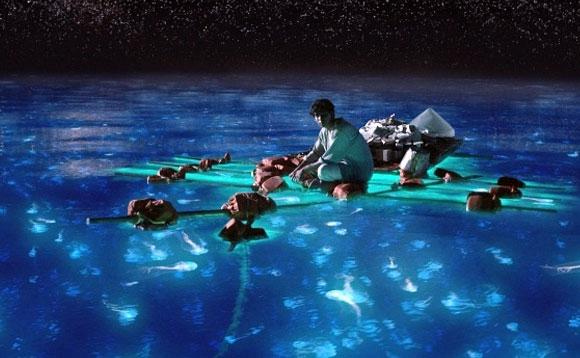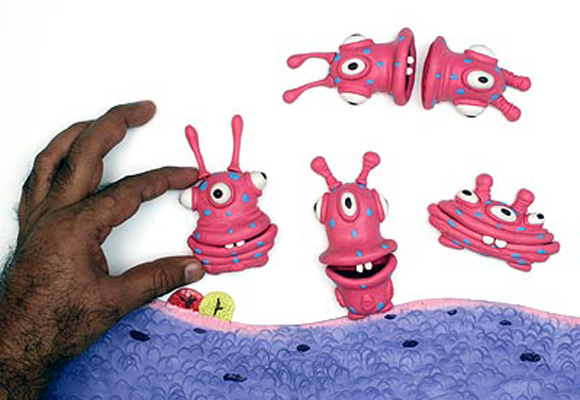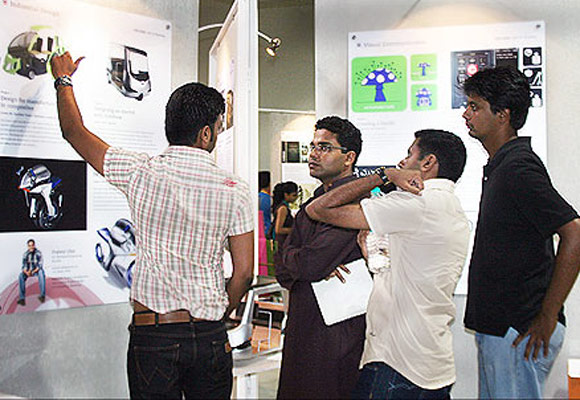 | « Back to article | Print this article |
JaitleySpeak: Will animation emerge as a hot career?
In his first Union Budget, Arun Jaitley spoke about setting up a National Institute of Animation for supporting Gaming and Animation industry. This proposal is sure to provide the much-needed boost to these ailing sectors.
However, in 2013, hundreds of employees had a harrowing time when leading animation studio Crest Animation shut shop and refused to pay its employees their pending salaries.
In the light of the FM's proposal, we reproduce the feature where we'd spoken to animation professionals from across the country to get a ring-side view of the industry.
With leading animation houses like Crest Animation Studios and Rhythm and Hues facing financial crises, we speak to studio owners and creative professionals from different parts of the country to understand what a career in the industry means for young and senior professionals.
When the Oscar-winning visual effects company Rhythm and Hues filed for bankruptcy in February 2013, the animation industry reacted to the news with shock and disbelief.
The company that won three Academy awards, the latest being for the best visual effects for Life Of Pi in 2013 had reportedly laid about 250 employees before it was taken over by Los Angeles based Prana Studios in March 2013.
More recently, on July 22, 2013, a city tabloid reported that leading animation studio Crest Animation based in Mumbai would also be shutting shop soon. Before we dwell on why a career in animation no longer attracts awe from aspirants and industry veterans it would be only pertinent to understand what is going wrong at Crest Animation and, in effect, with the industry.
Started in 1990, the studio that once had over 500 employees under it roll is reportedly incurring financial losses and finding it difficult to sustain operations even after downsizing its staff to 250.
A senior employee from the studio who did not wish to be named shared the sorry state of affairs: “I have worked at Crest for more than six years now. When I joined, I was offered a plum package. Back then, we also had good clients and projects to work on, which kept us motivated. However, as months passed, our salaries were delayed. We were told that the management is facing some financial problem. I haven’t received my salary from February 2013 and now we are being told to look for jobs outside. They are not even willing to pay our dues. How do I run my family? I have been calling my friends to help me with freelance opportunities to support my family,” he said speaking to Rediff.com over the phone.
This employee added that his colleagues have decided to protest against the management’s unfair decision and also keep a tight vigil on the company because they fear the management will close it any time and flee the city.
“I joined the company only two years ago, and came to know only recently that the company had stopped paying salaries on time since 2008,” a creative artist who’d joined Crest Animation in 2011 said.
This artist has not received his salary since April 2013 and finds it hard to conceal his anger when he explains how the organisation tried to cheat them.
“Every time we asked our managing director about our salaries, she’d tell us that the company was going through a bad time. Since we had an employee-friendly culture, we believed her and worked without complaining. Besides, we had a good client base, which kept us busy with projects. But since the start of this year, projects had comparatively reduced and few months ago, matters got worse when Seema Ramanna (the managing director of Crest Animation) told us that we (employees) were to be blamed for this situation. The management said that we had failed to deliver in our projects, which is why the company had incurred losses. However, the truth is that our company never had the infrastructure it required to handle those projects; when the resources were not provided, work was affected and projects got delayed. This is not our fault. We have been working without salaries and stayed with the company during its tough times and this is the reward we get for our loyalty,” he added.
A senior HR executive who's worked with Crest for over a decade confirmed that the management had been unfair to its employees in many ways: "Artists at Crest were always treated as labourers. I know for a fact that these people have worked 24x7 and trusted the company to give them their due. But Seema Ramanna has gone back on her words and defaulted more than once, so nobody trusts her. It's not easy to ask your artists to quit when you have not paid them a salary for nine months. And we are talking of proficient artists who've worked hard and proved their mettle, despite the crises. The anger and frustration of employees is only justified."
Apparently after releasing Alpha and Omega in 2010, Crest was planning to launch another movie. However, an American firm that was involved with the production, backed out at the last minute.
This was a major setback for the company -- it could not complete the movie nor pay off debts.
Soon, there were other issues that crept up -- it was unable to pay office rent and monthly salaries to employees.
“At one point, the management had difficulty asking its employees to finish the pending work which upset clients,” the HR executive said.
But, there is still hope, she believes.
“The last I know is Seema Ramanna wants to start a new chapter and resurrect the company and build it from scratch. At the same time, she cannot afford to hire a large team or pay the pending salaries. From past experience, we are not sure if she will even pay our salaries by September 2013 as she'd promised us in a meeting," said an official from Crest Animation who did not want to be named.
More than 250 employees at Crest Animation have more or less similar stories to share, say these employees who shared their stories with Rediff.com.
While some have quit and moved on, there are those who've switched to more stable careers like advertising and news media.
Seema Ramanna could not be reached on telephone.
To understand whether these were exclusive cases in point, we spoke to a few experts and professionals from the field of animation to get a ringside view of the industry in India.
Please click NEXT to continue reading...
Is the animation industry losing its sheen?
If a FICCI-KPMG report published in 2012 is anything to go by, the animation industry in India is estimated to be Rs 1,130 crore and will grow to Rs 2,397 crore by 2016.
In stark contrast, a lot of good animation studios are either shutting their India operations or being sold out to bigger production houses.
Experts believe that this is a serious concern because India is a significant contributor to the global market.
"If we don’t address these issues on time, we’ll soon lose out to cheaper markets like Russia and China," says Ankit Saxena, CEO and founder of Again Studios, Chandigarh.
One of the major reasons why the animation industry in India is losing its sheen is because of poor quality of labour and higher operational costs.
Sidharth Sengupta who worked with a leading animation house in Mumbai for four years quit the animation industry in 2011 because he wasn’t getting his professional due.
He explains the gravity of the situation thus: “There are very few animation houses in India that are doing good business, the rest are merely surviving and waiting to shut operations. The bigger problem however is the lack of respect for talent. Because India is a huge service provider, the management hires people for low salaries and make them work like donkeys. If you do good work, they will increase your projects and give you strict deadlines; if you don’t adhere to them or dare to complain against the management, you will lose your job because they’ll term you unproductive. So, you have employees who are overworked and underpaid. The appraisals are so poor -- the maximum raise you can expect is Rs 10,000 per month and that is if you are at a senior level, but that is also rare. Basically the animation industry is turning into a factory model -- where quantity of delivery is chosen over quality.”
Sengupta who refused to take up a job at Crest Animation a few years ago (he was offered Rs 30,000 a month as salary), today works at Draft Ulka, an advertising agency in Bandra, a Mumbai suburb, and is happy that he quit the animation industry for good.
“My friends who worked at Crest had warned me that the plum salaries were only on paper; most of the time they only received a small percentage of their salaries. I am glad I did not consider the offer,” he adds.
Operational costs: The game changer
Vishwas Sanghi who teaches clay modeling and visual effects at various animation institutes in Mumbai, Bangalore and Hyderabad says that Indian organisations don’t invest in training their professionals or upgrading technology which reflects poorly in its projects.
“Technology is a major driving force for the animation industry. Although we work for clients in the US and UK, our quality of work is pretty substandard. Companies are not using the profits to invest in buying new software or upgrading equipment. With cheap labour and cheap resources, it is unfair to expect professionals to deliver international quality of work. Why do you think we can’t make a commercially viable 3-D animation film in India every year? It’s not because of lack of talent; it’s because of lack of technology, and lack of means to produce it” feels Sanghi.
Veteran cinematographer Rajendra Prasad who’s worked on films like Game and Ei8ht Shani agrees with Sanghi. However, he also blames the organisation’s lack of vision for failing to notice the gaps and cater to the demand.
Prasad says that most small scale animation studios who are working for international clients have to bear huge operational costs which encroach upon their profit margin.
“The animation and visual effects industry has undergone a major change in the last few years. In the past, there used to be strict copyright on buying new software. Each software was expensive and had a hardware lock. Today you get software for cheap; pirated versions are available off the internet. So anyone who gets access can download them, refer the tutorials and become a professional. For Rs 30,000, you could buy a laptop and become an animator and entrepreneur. When talent is available dirt cheap, why would companies hire professionals and pay them a fixed salary and bear the extra costs?”
The veteran feels that Indian studio owners should know how to reimburse their operational costs from the companies that outsource them.
What the future holds for animation aspirants
Speaking of cheap labour Ankit Saxena who founded Again Studios in Chandigarh in 2011 explains how the lesser known animation institutions and studios have aggravated the situation and why it concerns young aspirants.
“Studios cannot always be blamed for the high attrition rate. If you see the quality of graduates passing out of these institutes, you will know the root cause of the problem. This graduate I interviewed few years ago could not draw a simple tractor. When he finished, I saw that one hand of the tractor was bigger than the other. If their basic drawing and creative skills leave much to be desired, no company would be willing to invest in training them on the job. If young professionals fail to upgrade their knowledge to meet the latest trends or fail to deliver on time, they will eventually lose their jobs.”
This might just be a warning for the lesser-talented artists and professionals but there is hope that things might actually improve.
According to Renju Ramesh, creative director and head of Toonz Amimation based out of Trivandrum, smaller studios are doing good business and will continue to do so.
“I agree 2-D animation is no longer preferred and there is a talent crunch. If animation production houses fail to wake up to the trends and employ artists who can satisfy the demand, there can be a problem. But from what I understand, both Rhythm and Hues and Crest Animation are not completely shutting down, so there is hope. Besides, even aspiring professionals should realise that the market is getting competitive by the day. If you do not deliver, no matter what field you belong to, your career is at stake. Organisations like ours want to hire people who are multi-talented, can manage multiple roles and perform under strict deadlines. If the country can produce that kind of talent -- people who have the passion and the vision to create things -- the animation industry is definitely going to go places.”



